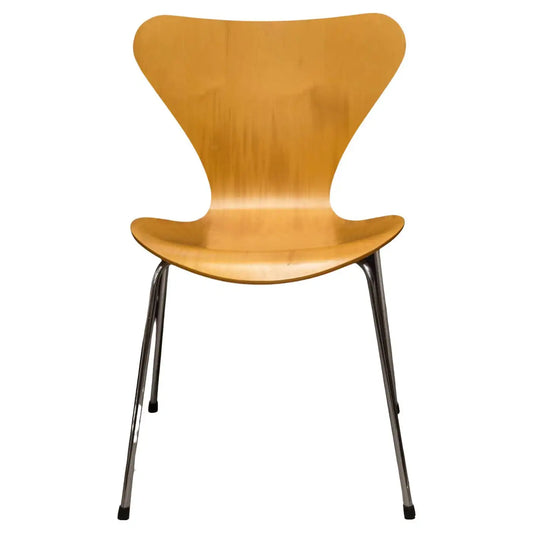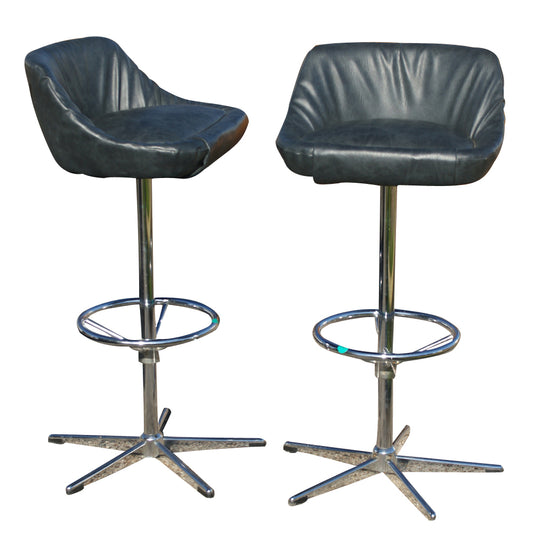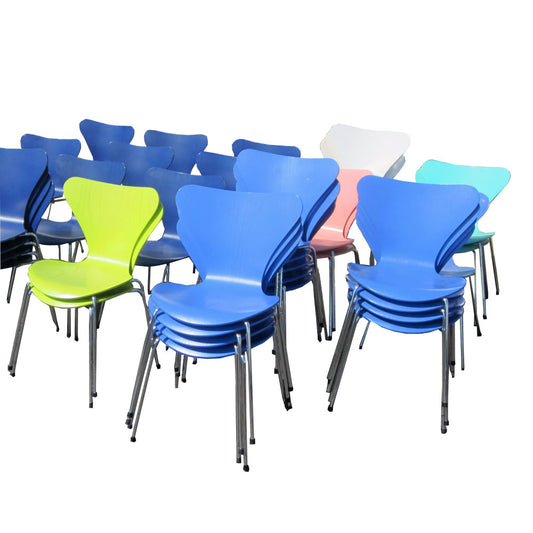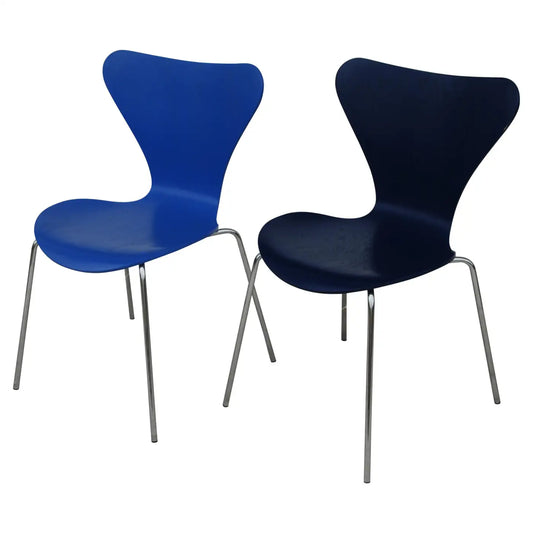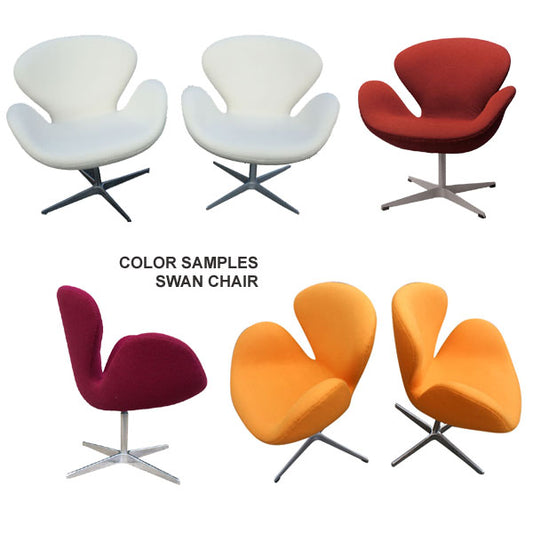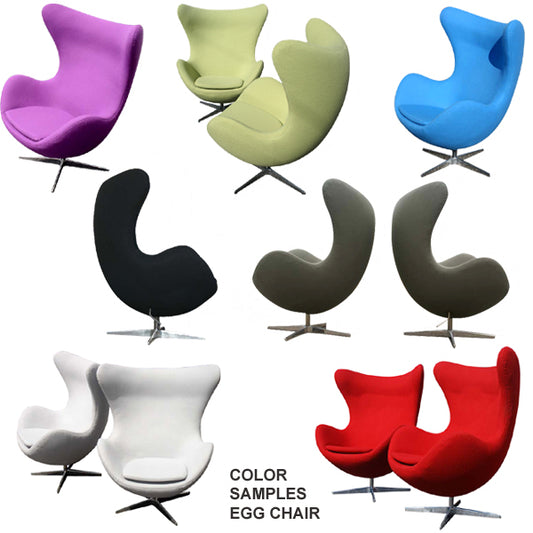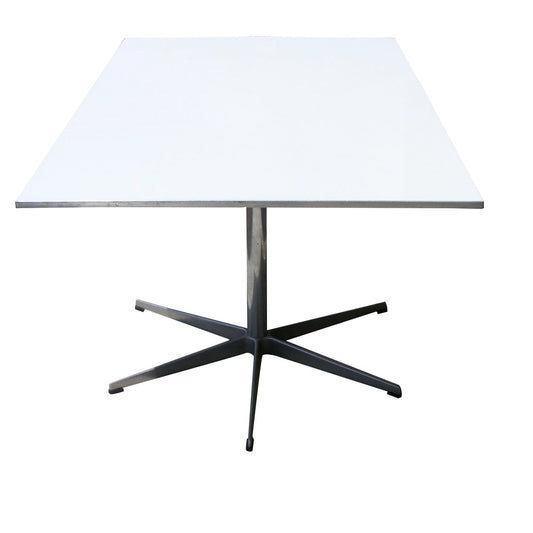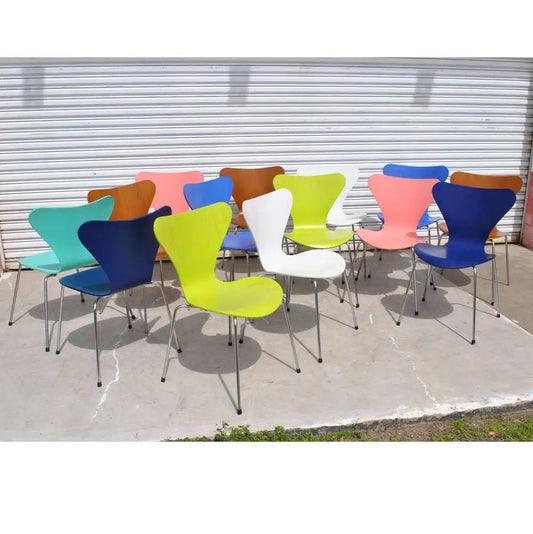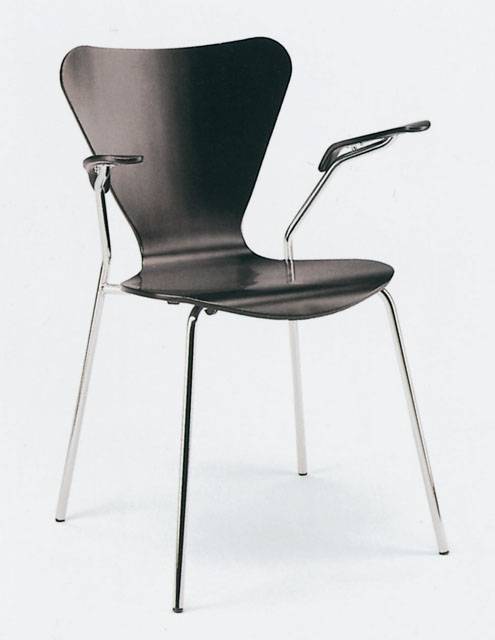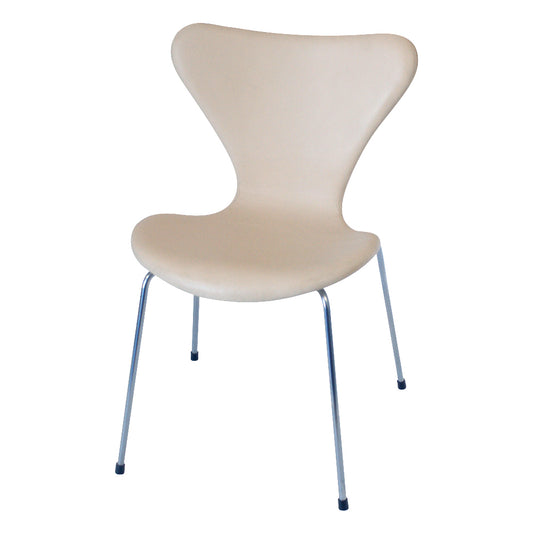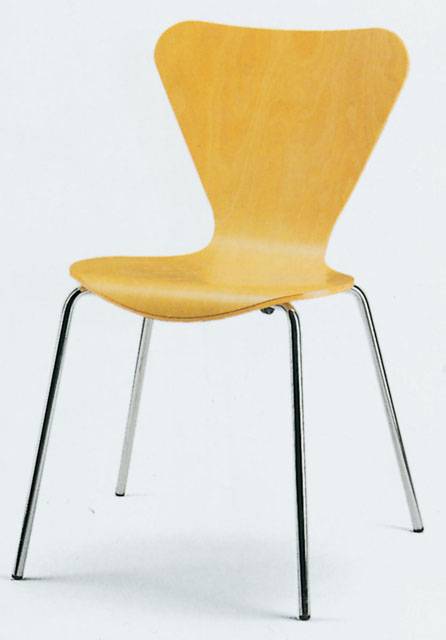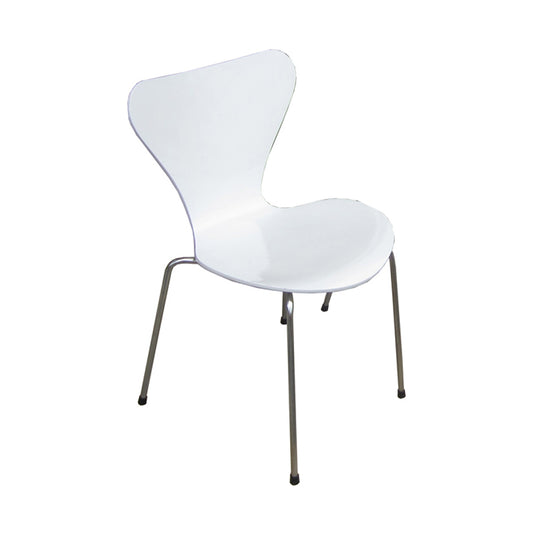Collection: Arne Jacobsen
Arne Jacobsen was born on 11 February 1902 in Copenhagen. His father Johan was a wholesale trader in safety pins and snap fasteners. His mother Pouline was a bank teller whose hobby was floral motifs. He is of Jewish descent. He first hoped to become a painter, but was dissuaded by his mother, who encouraged him to opt instead for the more secure domain of architecture. After a spell as an apprentice mason, Jacobsen was admitted to the Architecture School at the Royal Danish Academy of Fine Arts where from 1924 to 1927 he studied under Kay Fisker and Kaj Gottlob, both leading architects and designers.
Still a student, in 1925 Jacobsen participated in the Paris Art Deco fair, Exposition Internationale des Arts Décoratifs et Industriels Modernes, where he won a silver medal for a chair design. On that trip, he was struck by the pioneering aesthetic of Le Corbusier's L'Esprit Nouveau pavilion. Before leaving the Academy, Jacobsen also travelled to Germany, where he became acquainted with the rationalist architecture of Mies van der Rohe and Walter Gropius. Their work influenced his early designs including his graduation project, an art gallery, which won him a gold medal. After completing architecture school, he first worked at city architect Poul Holsøe's architectural practice.
In 1929, in collaboration with Flemming Lassen, he won a Danish Architect's Association competition for designing the "House of the Future" which was built full scale at the subsequent exhibition in Copenhagen's Forum.It was a spiral-shaped, flat-roofed house in glass and concrete, incorporating a private garage, a boathouse and a helicopter pad. Other striking features were windows that rolled down like car windows, a conveyor tube for the mail and a kitchen stocked with ready-made meals. A Dodge Cabriolet Coupé was parked in the garage, there was a Chris Craft in the boathouse and an Autogyro on the roof. Jacobsen immediately became recognised as an ultra-modern architect.
Still a student, in 1925 Jacobsen participated in the Paris Art Deco fair, Exposition Internationale des Arts Décoratifs et Industriels Modernes, where he won a silver medal for a chair design. On that trip, he was struck by the pioneering aesthetic of Le Corbusier's L'Esprit Nouveau pavilion. Before leaving the Academy, Jacobsen also travelled to Germany, where he became acquainted with the rationalist architecture of Mies van der Rohe and Walter Gropius. Their work influenced his early designs including his graduation project, an art gallery, which won him a gold medal. After completing architecture school, he first worked at city architect Poul Holsøe's architectural practice.
In 1929, in collaboration with Flemming Lassen, he won a Danish Architect's Association competition for designing the "House of the Future" which was built full scale at the subsequent exhibition in Copenhagen's Forum.It was a spiral-shaped, flat-roofed house in glass and concrete, incorporating a private garage, a boathouse and a helicopter pad. Other striking features were windows that rolled down like car windows, a conveyor tube for the mail and a kitchen stocked with ready-made meals. A Dodge Cabriolet Coupé was parked in the garage, there was a Chris Craft in the boathouse and an Autogyro on the roof. Jacobsen immediately became recognised as an ultra-modern architect.
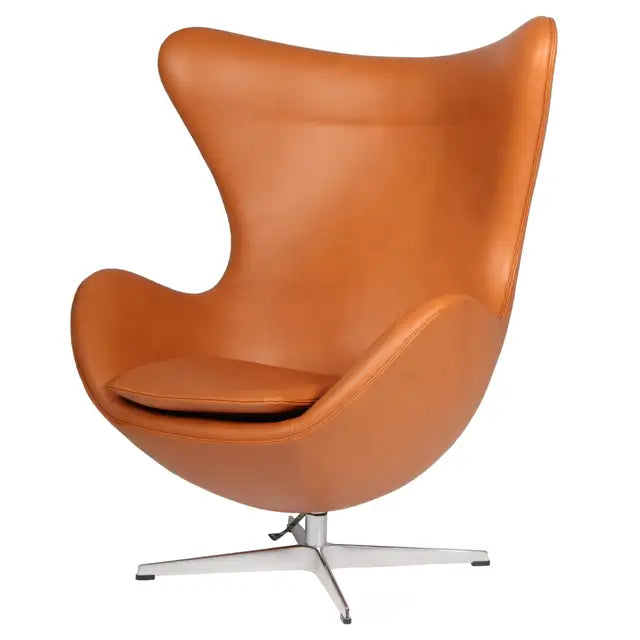
-
1 Series 7 Chair by Arne Jacobsen for Fritz Hansen Multiple Available
Regular price $295.00 USDRegular priceUnit price / per$394.00 USDSale price $295.00 USDSale -

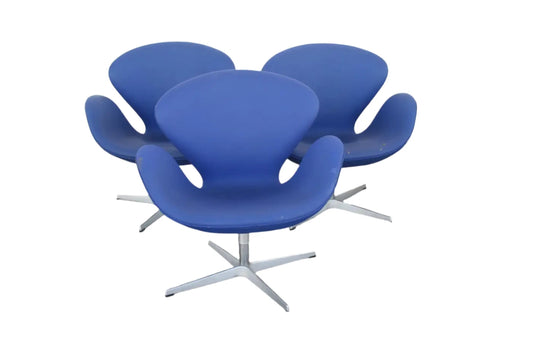 25% OFF
25% OFF1 Arne Jacobsen Swan Settee
Regular price $7,900.00 USDRegular priceUnit price / per$10,534.00 USDSale price $7,900.00 USDSale -
(2) Vintage Bar Counter Stools Arne Jacobsen Style Base (MR10383)
Regular price $1,600.00 USDRegular priceUnit price / per$2,134.00 USDSale price $1,600.00 USDSale -
Vintage Series 7 Chair by Arne Jacobsen for Fritz Hansen
Regular price $400.00 USDRegular priceUnit price / per$500.00 USDSale price $400.00 USDSale -
(1) Swan Chair Arne Jacobsen Style Chair
Regular price $1,500.00 USDRegular priceUnit price / per$2,000.00 USDSale price $1,500.00 USDSale -
(1) Egg Chair Arne Jacobsen Style Chair
Regular price $5,445.00 USDRegular priceUnit price / per$7,260.00 USDSale price $5,445.00 USDSale -
1968 Design Arne Jacobsen Piet Hein Dining Table Circular Series Six Star Pedestal Base
Regular price $2,900.00 USDRegular priceUnit price / per$3,867.00 USDSale price $2,900.00 USDSale -
CB9045 Arne Jacobsen Style Chair
Regular price $1,500.00 USDRegular priceUnit price / per -
CB3018 Arne Jacobsen Style Arm Chair
Regular price $600.00 USDRegular priceUnit price / per -
Vintage Arne Jacobsen for Fritz Hansen Cream Leather Series 7 Side Chair
Regular price $575.00 USDRegular priceUnit price / per -
C3123 Arne Jacobsen Style Chair
Regular price $1,200.00 USDRegular priceUnit price / per -
Arne Jacobsen Series 7 Chair for Fritz Hansen
Regular price $1,200.00 USDRegular priceUnit price / per


